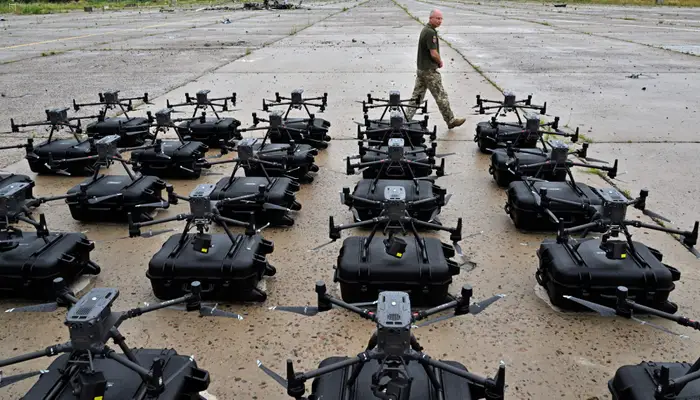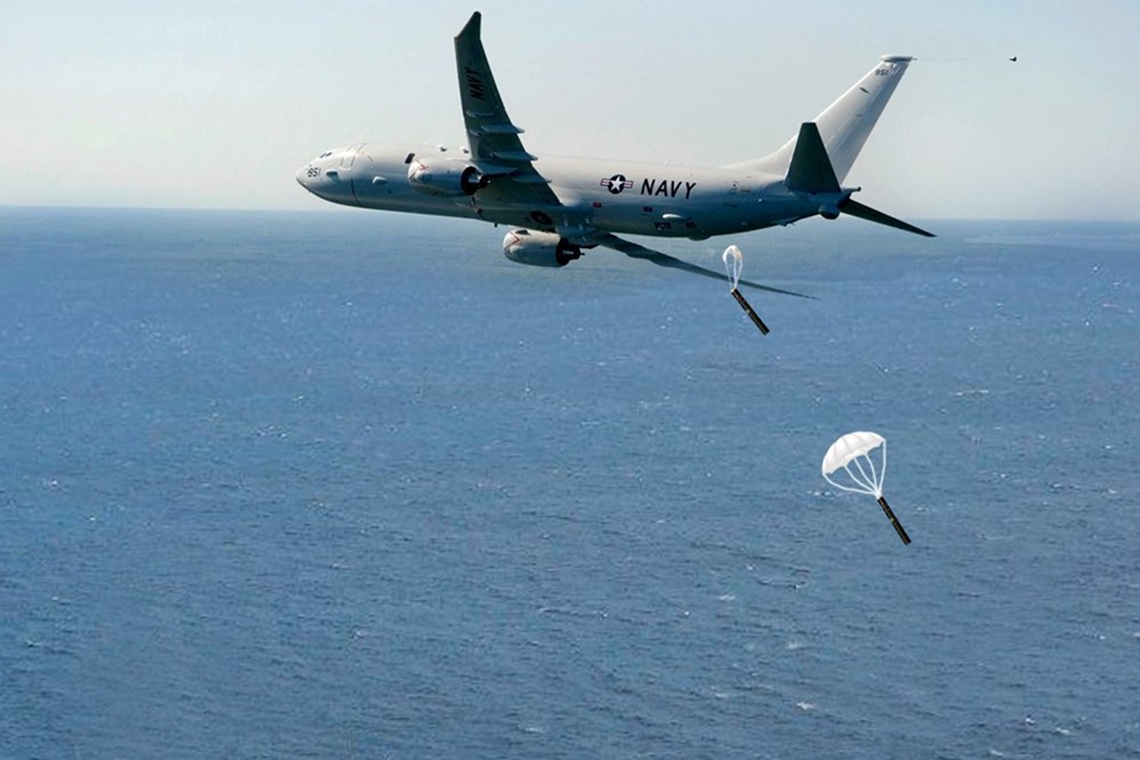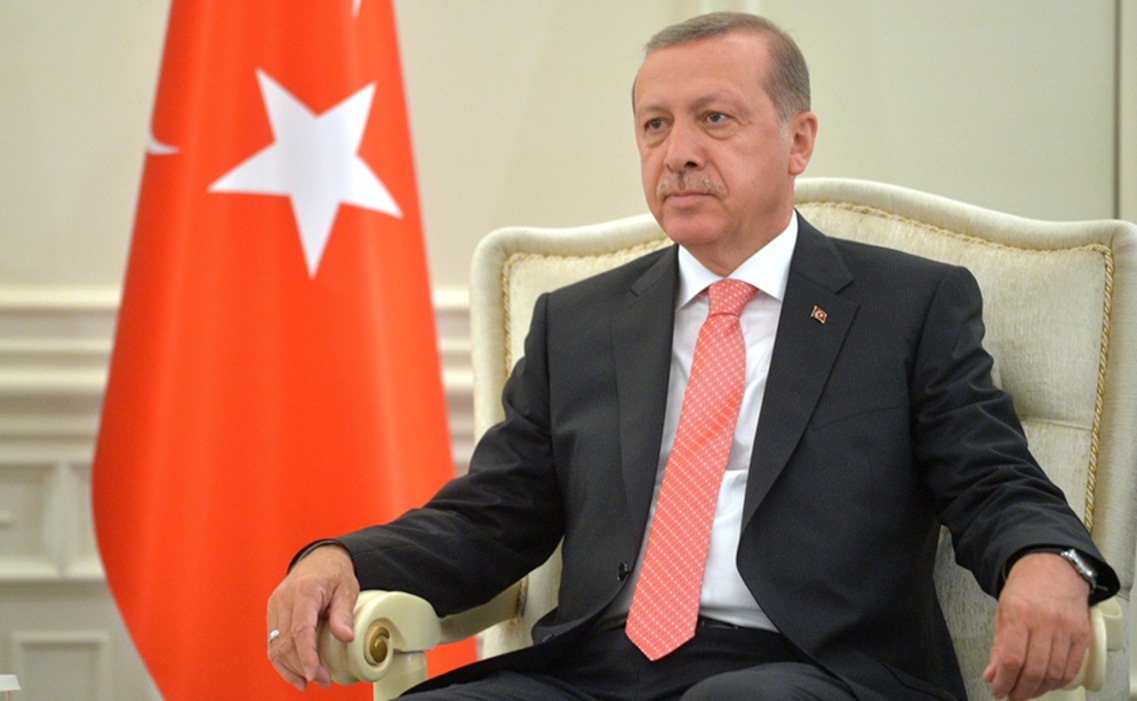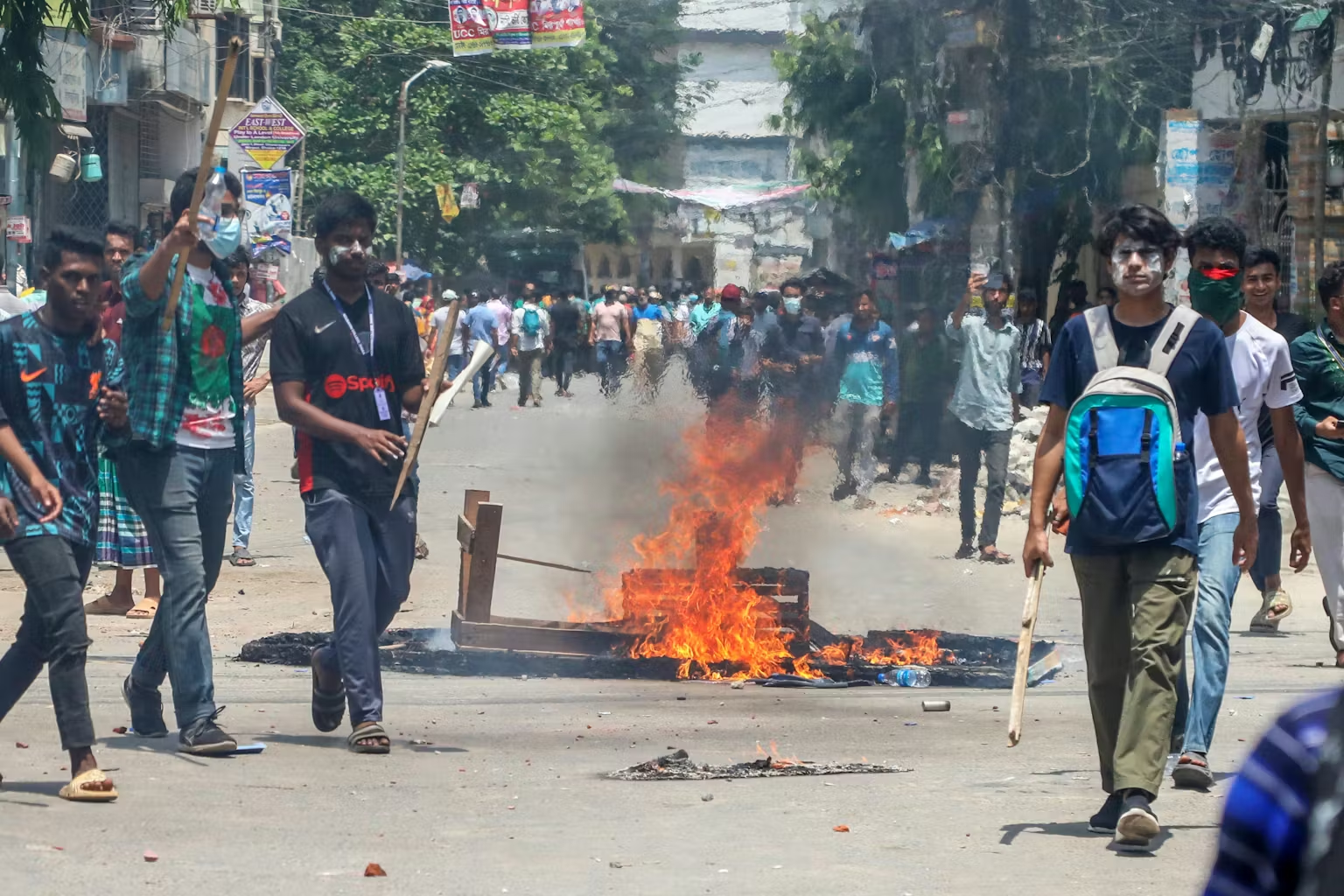This research paper explores the operational and strategic aspects of drone warfare in the Russia-Ukraine conflict, assessing its implications for India’s military modernisation efforts. It compares the applications of drone technology by both Russia and Ukraine, focusing on platforms such as the Bayraktar TB2, Lancet, and Shahed-136, and examines how factors like tactical innovation, electronic warfare (EW), and foreign supply chain dependencies have influenced the conflict’s outcomes.
Based on these findings, the paper assesses India’s progress in developing indigenous drone capabilities through initiatives such as Atmanirbhar Bharat, as well as operational actions like Operation Sindoor. It also highlights critical shortcomings in India’s joint military doctrine, EW readiness, and counter-drone systems.
Employing a qualitative approach that incorporates open-source intelligence (OSINT), defence sector reports, and insights from think tanks, the paper offers strategic recommendations aimed at enhancing India’s drone warfare capabilities in harmony with global advancements.
Introduction
Nowhere is this transformation more apparent than in the Russia–Ukraine conflict. This war has become a case study in the deployment, adaptation, and impact of unmanned aerial systems—ranging from reconnaissance drones to loitering munitions—on modern battlefield outcomes.
This paper examines the impact of aerial drones on the operational outcomes of the Russia–Ukraine war, drawing critical lessons for countries like India. It explores the comparative deployment of UAVs by both Russia and Ukraine, the broader impact of foreign involvement and supply chains, and the evolution of India’s indigenous drone capability. The aim is to identify strategic implications for India and recommend proactive measures to bolster its drone warfare ecosystem.
Review of Literature
The literature on drone warfare has expanded significantly in the last decade, focusing on tactical utility, strategic implications, technology proliferation, and defence innovation. Scharre (2018) discusses autonomous weapons in Army of None, noting the growing battlefield role of loitering munitions. Bendett (2022, 2023) and Bremmer (2022) provide timely analyses of Ukraine’s drone usage, especially FPV drones and evolving EW countermeasures. Kallenborn (2023) highlights the psychological and attritional effects of kamikaze drones. RUSI reports (Watling & Reynolds, 2022, 2023) highlight how drones have transformed modern warfighting models by allowing deeper, lower-cost strikes.
In the Indian context, IDSA and ORF publications examine the domestic evolution of UAVs, particularly the shift from surveillance platforms to AI-integrated combat drones. Aroor (2022) in Livefist Defence highlights the rise of private-sector participation. Reports by Conflict Armament Research (2023) and UNIDIR provide insights into the global supply chain vulnerabilities of drone systems, including foreign involvement in the Ukraine war.
Research Gap
While there is ample global literature on drone warfare in Ukraine and studies on India’s indigenous UAV development, there is a noticeable gap in linking global operational lessons to India’s strategic posture. Existing analyses often treat India’s drone program in isolation, without comparing it to contemporary wartime applications. Moreover, little attention has been paid to India’s doctrinal, electronic warfare, and counter-drone challenges in the context of lessons from the Russia-Ukraine conflict.
Research Objectives
To analyse the role of aerial drones in shaping strategic and operational outcomes of the Russia-Ukraine conflict.
To identify lessons from Ukraine’s and Russia’s drone deployments that apply to India. To assess India’s indigenous drone development under Atmanirbhar Bharat and iDex.
To evaluate current gaps in India’s EW resilience, UAV doctrine, and counter-drone infrastructure.
To propose strategic recommendations for India’s future drone warfare preparedness.
Research Question
How has the deployment of aerial drones influenced the strategic and operational outcomes of the Russia–Ukraine conflict, and what global lessons—particularly regarding drone development, countermeasures, and supply chains—can be drawn from it?
Research Methodology
This research employs a qualitative, comparative case study approach supported by Open-Source Intelligence (OSINT). Primary sources include verified strike reports, defence ministry briefings, DRDO updates, and think tank publications from RUSI, CSIS, IDSA, and ORF. Comparative analysis is used to examine drone platforms deployed by Ukraine and Russia and their effectiveness under real combat conditions. The Indian case is studied through policy documents, government reports, and operational accounts like Operation Sindoor. The paper triangulates technological developments, doctrinal shifts, and operational use-cases to derive insights and policy implications for India.
Drone Warfare in the Russia-Ukraine Conflict
The Russia-Ukraine conflict has emerged as a significant case study in the operational deployment of unmanned aerial vehicles (UAVs) within contemporary military strategies. Both nations have effectively integrated drones across a variety of tactical roles, including real-time surveillance, artillery coordination, precision strike capabilities, and psychological warfare initiatives. Notably, Ukraine’s deployment of Turkish-manufactured Bayraktar TB2 drones has been instrumental during pivotal moments in the conflict, particularly in the early stages of Ukraine’s defence of Kyiv and Kharkiv in 2022. These medium-altitude, long-endurance UAVs have been adeptly utilised for tactical reconnaissance and have demonstrated notable efficacy in executing precision strikes against Russian supply convoys and command centres, significantly impacting operational outcomes. (Royal United Services Institute [RUSI], 2023). As Russian defences improved, the effectiveness of TB2 drones dwindled due to advanced electronic warfare systems and air defence structures. In response, Ukraine adopted a decentralised approach, using first-person view (FPV) drones and modified quadcopters as loitering munitions. These alternatives were cost-effective and allowed for quick replacement, enhancing Ukraine’s operational flexibility and tactical unpredictability (Bendett, 2023).
Russia’s response to the conflict has included the deployment of the Lancet loitering munition, an unmanned aerial vehicle targeting Ukrainian artillery and NATO-supplied howitzers (Janes, 2023). Additionally, Iran-supplied Shahed-136 drones have been used in saturation strikes against civilian infrastructure. Although these drones are not very accurate, their low cost and ability to be deployed in swarms make them effective for psychological and economic disruption (CSIS, 2023).
Ukraine has utilised NATO’s innovation and ISR support, while Russia focuses on mass drone deployment and electronic warfare. These strategies show how UAVs can extend operational reach, reduce personnel risk, and alter attritional warfare dynamics.
Tactical Shifts and Electronic Warfare Responses
Electronic warfare (EW) plays a vital role in drone operations during the Russia-Ukraine conflict. Both nations have effectively utilised EW to disrupt unmanned aerial vehicle (UAV) missions. Russia employs systems like Krasukha-4, Leer-3, and Zhitel to interfere with Ukrainian drone communications and GPS, causing crashes or mission failures. In response, Ukraine has integrated NATO-supplied EW equipment and developed its counter-drone solutions to enhance its operational capabilities.
The effectiveness of these EW measures is demonstrated by documented UAV losses. The Royal United Services Institute reported that Ukraine lost over 90% of its original Bayraktar TB2 fleet by the end of 2022, mainly due to jamming and anti-aircraft systems (RUSI, 2023). These losses prompted a rapid shift in Ukrainian tactics, moving towards cheaper, quickly deployable FPV drones and quadcopters with encrypted communication modules.
Russia has been forced to adjust as well. Although the Shahed-136 is effective in saturation attacks, it is also vulnerable to jamming and interception by Ukrainian anti-drone defences, including AI-powered detection and laser-based countermeasures. As a result, Russia has begun experimenting with hardened drones and advanced guidance systems for the Lancet series to maintain effectiveness against fortified positions (CSIS, 2023).
A key lesson from the EW environment in Ukraine is the rising significance of loitering munitions and kamikaze drones in contested airspaces. Their expendability and agility suit environments where high-value MALE drones are at risk. The conflict shows that survivability in modern drone warfare relies heavily on EW resilience and system redundancy, not just airframe design or payload capacity.
Foreign Involvement and Supply Chains in the Russia–Ukraine Drone War
The Russia–Ukraine conflict has exposed how modern warfare is as much a test of logistics and alliances as it is of frontline capabilities. Drone warfare reflects the strategic role of international supply chains, arms diplomacy, and technological adaptation.
Turkey played a crucial role in supplying Bayraktar TB2 drones to Ukraine, which became symbols of the country’s resilience during the war, particularly in 2022, by disrupting Russian operations. This support reflected a strategic partnership and Turkey’s intent to assert regional influence, highlighting how UAV technology is now a significant tool in geopolitical engagement.
Iran has become a vital partner for Russia, providing Shahed-131/136 loitering munitions, now rebranded as Geran-1/2. These drones, produced in Iran and reportedly reassembled in Russia using reverse-engineered designs and imported components, mark a tactical shift towards low-cost saturation attacks on Ukrainian infrastructure. Investigations have uncovered Western electronics in downed Iranian drones, exposing vulnerabilities in global supply chains.
NATO countries, led by the US, supplied Ukraine with ISR-capable drones such as the RQ-20 Puma, Switchblade 300/600 loitering munitions, and Phoenix Ghost. These drones improved Ukraine’s tactical accuracy and situational awareness but were limited in endurance and strategic reach compared to Russia’s increasingly diverse drone arsenal.
Russia also began reverse-engineering commercial drones (DJI, Autel) and integrating them with locally developed guidance systems and explosives, blurring the line between civilian tech and military applications. This improvisational adaptation, despite sanctions, reflects the rise of arms bricolage as a wartime innovation tactic.
India’s UAV Evolution: A 35-Year Overview
India’s journey in developing indigenous UAVs spans over three decades, reflecting the country’s growing emphasis on technological self-reliance and strategic autonomy. The development of Indian UAVs has been spearheaded by state institutions like the DRDO and supported by a growing private sector ecosystem under Atmanirbhar Bharat.
The 1990s saw the birth of India’s first tactical UAVs, Nishant and Lakshya. Nishant, developed by DRDO, was a catapult-launched UAV used for battlefield surveillance and intelligence gathering. Though operationally limited, it marked India’s foundational step into indigenous drone manufacturing. Lakshya, on the other hand, was an aerial target drone used primarily by the armed forces for training and testing.
The 2000s witnessed more robust initiatives like Rustom-I/II, later known as Tapas-BH, India’s MALE-class drone. Although still under user trials, it reflects significant domestic R&D progress. In the mini-UAV category, Netra—developed jointly by DRDO and IdeaForge— gained prominence during counter-insurgency operations and natural disasters.
The 2020s have seen a surge in indigenous drone innovation. Archer-NG, a next-gen UCAV with stealth and endurance, is being developed. Private firms like IdeaForge and NewSpace Research & Technologies are collaborating with the Indian Army to deploy ISR drones in high-altitude areas like Ladakh, while DRDO’s HALE-2 project highlights a move toward long-range autonomous platforms.
India’s UAV trajectory—though slower than some global peers—demonstrates clear evolution from basic surveillance drones to sophisticated combat-ready systems, propelled by policy support and a burgeoning defence-tech ecosystem.
Atmanirbhar Bharat and Indigenous Drone Development: Recent Efforts under Make in India and iDEX
India’s aspiration for technological self-reliance has found a strong expression in the development of indigenous drone systems, propelled by national initiatives such as Atmanirbhar Bharat, Make in India, and the iDEX (Innovations for Defence Excellence) program. These efforts aim to reduce dependence on imports and foster a domestic ecosystem where R&D institutions, startups, and defence forces can co-develop cutting-edge aerial systems tailored to India’s unique security needs.
As of 2023, over 250 defence-tech projects have been supported through iDEX, and at least 14 drone-focused startups have received grants or procurement contracts from the Ministry of Defence (Ministry of Defence, 2023). The Indian Army alone has placed orders for over 400 SWITCH drones, a significant milestone for Indian firm IdeaForge, whose systems have proven valuable in high-altitude ISR missions (Livefist Defence, 2022).
The Defence Research and Development Organisation (DRDO) continues to lead foundational research, with projects like the Tapas-BH (Rustom-II) undergoing user trials and the Archer-NG, a stealthy UCAV, in advanced design stages (IDSA, 2022). Meanwhile, private companies such as NewSpace Research & Technologies are pioneering AI-enabled swarm drone systems and loitering munitions, often in partnership with HAL and BEL (ORF, 2023).
The Drone Rules 2021 relaxed licensing requirements and opened the airspace for commercial drone trials and innovation (Ministry of Civil Aviation, 2022). The Defence Acquisition Procedure (DAP) 2020 encourages the procurement of IDDM (Indigenously Designed, Developed and Manufactured) systems, giving Indian developers a policy-backed advantage in military tenders (PIB, 2023).
There’s also a visible shift toward exports. In FY 2022–23, India’s defence exports crossed ₹16,000 crore (~$2 billion), with drones and UAV subsystems forming a growing share (PIB, 2023). Indian drones have been showcased at global defence expos such as Aero India and DEFEXPO, attracting interest from Southeast Asia, Africa, and Latin America.
Today, Indian startups are working on drone solutions for everything from border security to disaster response and urban logistics. The fusion of state vision, policy support, and private talent is transforming India from a consumer of drone technology into a future exporter and thought leader in the unmanned systems domain.
Operational Deployment: Case of Operation Sindoor
While often shrouded in operational secrecy, Operation Sindoor has quietly emerged as a landmark moment in India’s real-world application of drones for national security. Initiated during the border tensions with China in Eastern Ladakh, this high-altitude surveillance operation marked one of India’s first sustained, AI-integrated drone deployments aimed at ensuring 24×7 border vigilance in an extremely challenging environment.
At the heart of the operation were SWITCH drones, manufactured by Mumbai-based IdeaForge. These Vertical Take-Off and Landing (VTOL) drones are capable of flying for over 2 hours at altitudes exceeding 4,500 meters, even in thin air and freezing temperatures (IdeaForge, 2021). Their lightweight structure, endurance, and robust sensors allowed Indian forces to monitor vast stretches of mountainous terrain that were previously patrolled manually under extreme physical strain (Livefist Defence, 2022).
The integration of drones dramatically reduced risks for Indian soldiers, who previously endured physically demanding foot patrols in harsh conditions without real-time intelligence. SWITCH drones provided live, encrypted video feeds to commanders, allowing for better monitoring of troop movements and informed deployment decisions (ORF, 2023).
Operation Sindoor’s technological advancement stemmed from its use of artificial intelligence. AI image analysis algorithms allowed drones to automatically detect and differentiate objects, reducing false alarms and improving response times to actual threats. ISR data was combined with satellite imagery and weather models to create a dynamic situational map.
Publicly available reports suggest drone-assisted vigilance under Sindoor led to a measurable drop in unauthorised intrusions, improved response efficiency by 40%, and significantly reduced the fatigue levels of troops deployed at outposts (Sharma, 2023).
More importantly, this operation validated India’s ability to adapt homegrown drone technologies for tactical field use, even in harsh geographies. It also marked a doctrinal shift— from static surveillance infrastructure to a digitally linked, drone-augmented surveillance network. Operation Sindoor has since been cited in internal military reviews as a benchmark for drone-led ISR strategy.
As India prepares for future challenges across not just the Himalayan borders but also coastal and counter-insurgency zones, Operation Sindoor serves as a proof-of-concept for how AI, drones, and indigenous innovation can come together to protect sovereignty with agility and precision.
Strategic Reflections and Future Pathway
India’s growing experience with drone warfare—though not as intense as Ukraine’s—still offers a valuable strategic mirror. While the country has made commendable strides in indigenous UAV development and limited operational deployment, future readiness requires a more integrated, doctrine-driven, and resilient approach to unmanned systems.
The Russia–Ukraine war emphasises the importance of electronic warfare (EW) and reveals vulnerabilities in advanced drones lacking strong EW protection. India requires a comprehensive counter-EW strategy for drone survivability. Although the DRDO has developed systems like D4 (Drone Detection, Dissuasion, and Destruction), their deployment and battlefield validation remain limited. The Ukrainian experience highlights the need for jam-resistant communications, frequency-hopping encryption, and improved drone-EW integration, which should be given priority in Indian R&D.
India’s current UAV usage is primarily fragmented across services, with the Army, Navy, and Air Force deploying drones with separate command, control, and procurement protocols. Unlike NATO, India does not yet have a joint unmanned systems doctrine. This hampers interoperability and real-time information sharing, especially during joint operations (CAPS, 2023).
In the face of evolving threats—including from non-state actors—India must also strengthen its counter-drone architecture. Station stations like the 2021 drone attack on the Jammu Air Force Station have underscored vulnerabilities to low-cost UAV intrusions (PIB, 2021).
Integrating radar-IR hybrid sensors, AI-based classification systems, and kinetic/soft-kill options into civilian and military zones is now urgent. Perhaps the most future-facing is the opportunity in swarm warfare. Indian startups, in collaboration with DRDO and NewSpace Research, have made initial progress in developing AI-enabled drone swarms for area denial and saturation attacks. Yet operational readiness is still at a prototype level.
In short, India’s path forward lies in bridging the gap between its promising technological capabilities and effective battlefield integration. The future of drone warfare is not just about flying machines; it’s about how well they are embedded within a nation’s wider tactical doctrine, EW survivability, and real-time decision-making matrix.
Conclusion
The Russia–Ukraine war has proven that drone warfare is not merely a futuristic concept but a contemporary battlefield reality. The use of drones—ranging from high-end MALE UAVs to commercial quadcopters—has redefined the tempo, reach, and psychology of modern combat. From Ukraine’s precise Bayraktar strikes to Russia’s relentless Shahed-136 swarm attacks, the war underscores how unmanned systems can shape outcomes at both strategic and tactical levels (RUSI, 2023; CSIS, 2023).
India’s response to this evolving paradigm has been measured yet meaningful. Indigenous drones, such as SWITCH and TAPAS-BH, alongside initiatives under Atmanirbhar Bharat, reflect a growing emphasis on self-reliance and innovation. Operations such as Sindoor have demonstrated India’s ability to adapt these technologies in active surveillance roles, especially in difficult terrains like the Himalayas.
However, India’s strategic readiness depends on more than capability alone—it requires foresight, integration, and agility. As India accelerates its investments in swarm drone R&D, AI-based ISR systems, and counter-drone defences, it must also institutionalise joint doctrines and adaptive command structures to operationalise these tools effectively.
The global lessons are clear: drone warfare is here to stay and will define the character of future conflicts. For India, this is both a challenge and an opportunity to shape its military posture not as a reactive power, but as a proactive, tech-savvy force prepared to meet the demands of tomorrow’s battlespace.
Title image courtesy: https://www.businessinsider.com
Disclaimer: The views and opinions expressed by the author do not necessarily reflect the views of the Government of India and Defence Research and Studies

References
- Bendett, S. (2023). *Electronic Warfare and Drone Vulnerability in Ukraine*. CNA Brief.
- Center for Strategic and International Studies (CSIS). (2023). *Shahed drones and Russia’s strategy*. https://www.csis.org.
- Government of India, Ministry of Civil Aviation. (2022). *Drone Rules 2021: Regulatory reforms for drone innovation*.
- Government of India, Ministry of Defence. (2023). *iDEX program dashboard*. https://www.mod.gov.in.
- Government of India, Press Information Bureau (PIB). (2023). *India’s defence exports reach ₹16,000 crore*. https://pib.gov.in.
- IdeaForge. (2021). *SWITCH UAV technical specs*. https://www.ideaforge.co.in.
- Institute for Defence Studies and Analyses (IDSA). (2022). *India’s drone development trajectory*. https://www.idsa.in.
- Institute for Defence Studies and Analyses (IDSA). (2022). *Towards a unified UAV doctrine in India*. https://www.idsa.in.
- Livefist Defence. (2022). *SWITCH UAV inducted by Indian Army: What it means for India’s ISR ops*. https://www.livefistdefence.com.
- Livefist Defence. (2023). *India’s counter-drone strategy: Current capabilities and gaps*. https://www.livefistdefence.com.
- Observer Research Foundation (ORF). (2023). *AI-enabled drones and India’s strategic
- posture*. https://www.orfonline.org.
- Observer Research Foundation (ORF). (2023). *Swarm drones and the future of warfare: India’s strategic leap*. https://www.orfonline.org.
- Royal United Services Institute (RUSI). (2023). *Drone lessons from Ukraine: Attrition, ISR, and innovation*. https://www.rusi.org.
- Sharma, S. (2023). Operational impact of UAV surveillance in high-altitude warfare: The case of Operation Sindoor. *Strategic Affairs Quarterly, 9*(2), 45–57.
- Aroor, S. (2022). India’s growing drone ecosystem: Public-private partnerships and innovation. *Livefist Defence*. https://www.livefistdefence.com.
- Bendett, S. (2022). The rise of FPV drones in Ukraine. *CNA Analysis*. https://www.cna.org.
- Bendett, S. (2023). Electronic Warfare and Drone Vulnerability in Ukraine. *CNA Brief*. https://www.cna.org.
- Bremmer, I. (2022). How drones changed the war in Ukraine. *Time Magazine*. https://www.time.com.
- Conflict Armament Research. (2023). *Weapon components in Iranian UAVs: Supply chain analysis*. https://www.conflictarm.com.
- Kallenborn, Z. (2023). Kamikaze drones and the psychology of war. *Modern War Institute*. https://mwi.usma.edu.
- Scharre, P. (2018). *Army of None: Autonomous weapons and the future of war*. W. W. Norton & Company.
- UNIDIR. (2023). *Emerging threats from unmanned systems and supply chain risks*. https://www.unidir.org.
- Watling, J., & Reynolds, N. (2022). *Drone warfare and electronic countermeasures in Ukraine*. *Royal United Services Institute*. https://www.rusi.org.
- Watling, J., & Reynolds, N. (2023). *ISR and innovation: Drone tactics in Ukraine*. *Royal United Services Institute*. https://www.rusi.org.








